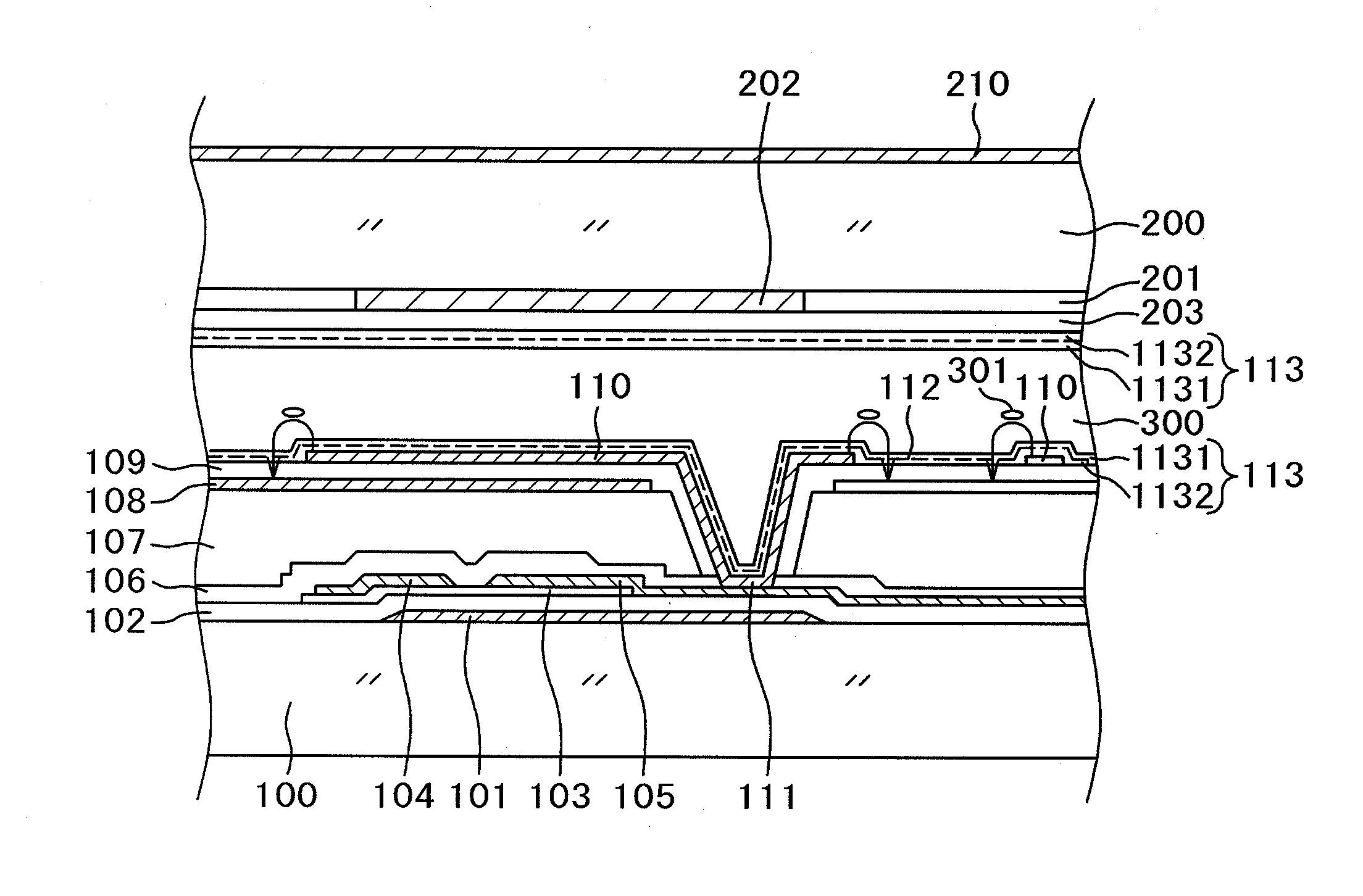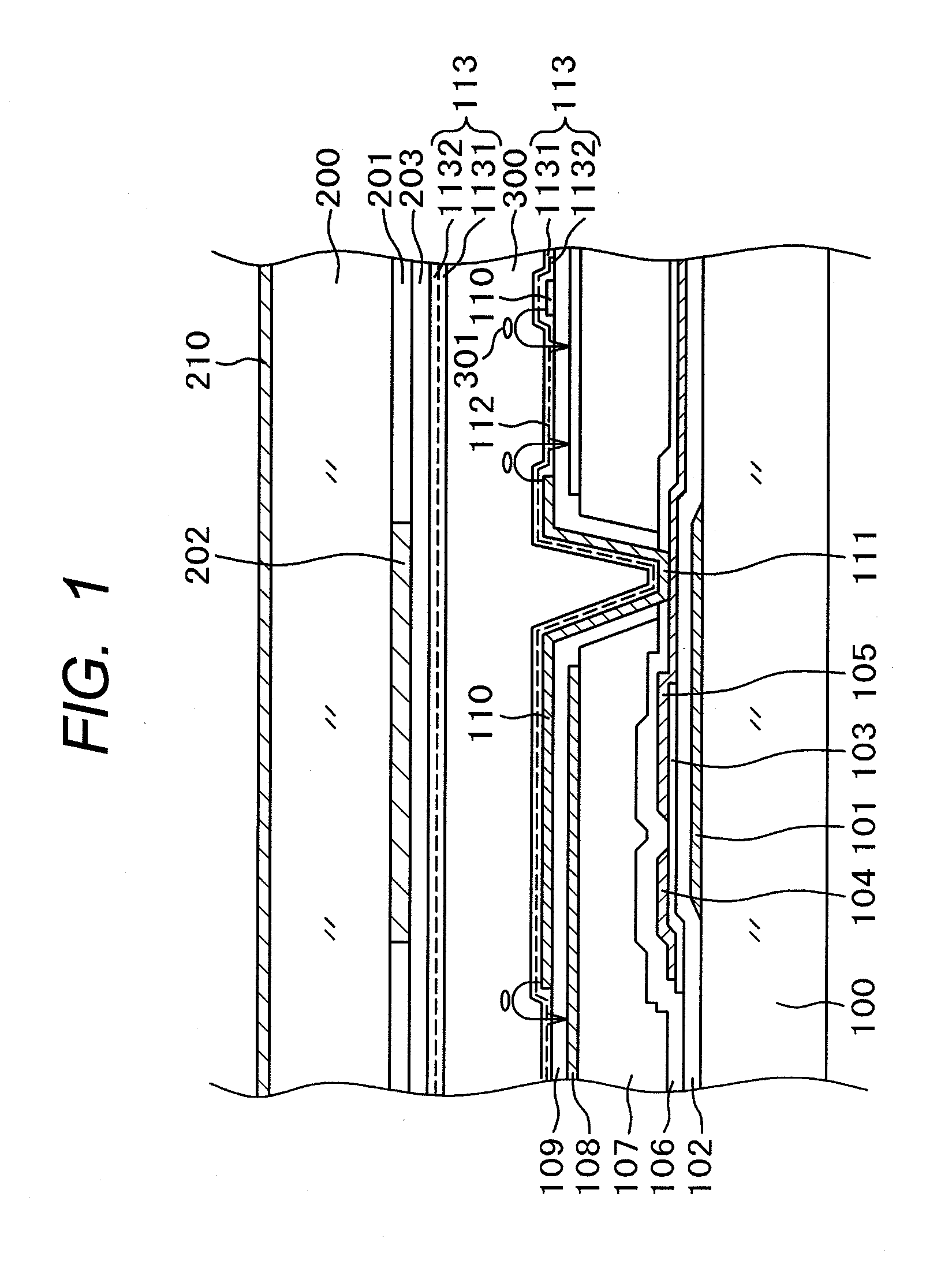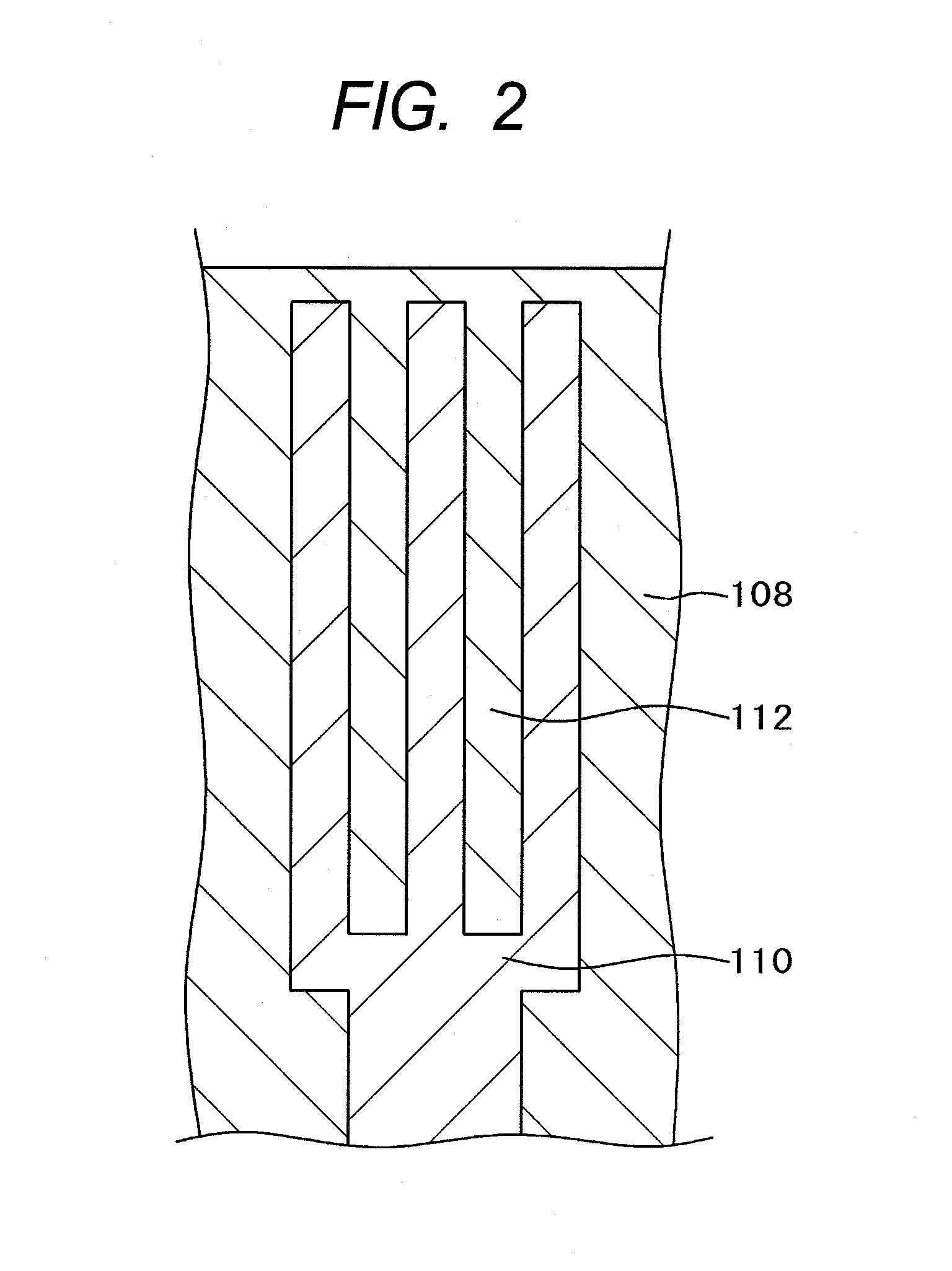Liquid crystal display device
a liquid crystal display and display film technology, applied in the field of liquid crystal display devices, can solve the problems of low alignment stability, poor quality display, power-quality display typified, etc., and achieve the effects of avoiding degrading the mechanical enhancing the anchoring strength of the alignment film, and enhancing the film strength
- Summary
- Abstract
- Description
- Claims
- Application Information
AI Technical Summary
Benefits of technology
Problems solved by technology
Method used
Image
Examples
first embodiment
FIG. 1 is a cross-sectional diagram showing a structure in a display region of an IPS type liquid crystal display device. A variety of electrode structures for IPS type liquid crystal display devices are proposed and put in practical use. The structure shown in FIG. 1 is widely used now. In simple terms, over a common electrode 108 formed in a flat monolithic form, a comb-shaped pixel electrode 110 is formed with an insulation layer intervening therebetween. By rotating liquid crystals 301 depending on a voltage between the pixel electrode 110 and the common electrode 108, light transmissibility through a liquid crystal layer 300 is controlled pixel by pixel and an image is thus produced. The structure in FIG. 1 will be described in detail below. While the present invention is described by taking the structure in FIG. 1 as an example, the invention can be applied to an IPS type liquid crystal display device having a structure other than that shown in FIG. 1.
In FIG. 1, a gate electro...
second embodiment
In the first embodiment, how the alignment film structure and the process for photo-alignment contribute to an advantageous effect against AC afterimages is mainly discussed. The structure of the present invention can achieve the effect against so-called DC afterimages, besides AC afterimages.
DC afterimages are a phenomenon resulting from charge accumulation in certain portions of the alignment film. Hence, DC afterimages are a reversible phenomenon, because they disappear when charges dissipate. In order to avoid DC afterimages, it is conceivable that the alignment film is adapted to have a structure that facilitates fast dissipation of charges accumulated in the alignment film or a structure that primarily prevents charges from being accumulated in the alignment film.
First, descriptions are provided for the structure that facilitates fast dissipation of accumulated charges. We evaluated DC afterimages as follows. That is, the checker flag pattern made up of 8×8 white and black cel...
PUM
| Property | Measurement | Unit |
|---|---|---|
| Temperature | aaaaa | aaaaa |
| Temperature | aaaaa | aaaaa |
| Temperature | aaaaa | aaaaa |
Abstract
Description
Claims
Application Information
 Login to View More
Login to View More - R&D
- Intellectual Property
- Life Sciences
- Materials
- Tech Scout
- Unparalleled Data Quality
- Higher Quality Content
- 60% Fewer Hallucinations
Browse by: Latest US Patents, China's latest patents, Technical Efficacy Thesaurus, Application Domain, Technology Topic, Popular Technical Reports.
© 2025 PatSnap. All rights reserved.Legal|Privacy policy|Modern Slavery Act Transparency Statement|Sitemap|About US| Contact US: help@patsnap.com



